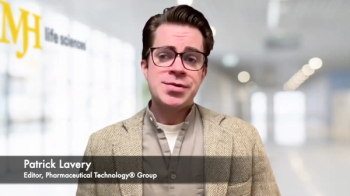
- Pharmaceutical Technology-10-02-2011
- Volume 35
- Issue 10
Advancing with the Times
Despite new hurdles, industry must move forward and fulfill its mission.
I received my pharmaceutical sciences doctorate degree 30 years ago. A graduate student colleague and I were recently discussing our careers and the changes we've witnessed in the pharmaceutical industry. We both wondered whether our careers were taking place in the "Golden Age" of our industry or whether that time had passed us by.
Philip R. Mayer
When graduate students completed their degree requirements in the 1980s, 1990s, or even in the early 2000s, they were frequently recruited by multiple, large drug companies. Maybe they weren't 7-foot basketball stars, but their training and the needs of pharmaceutical companies were a great match. Most students had several job offers with immediate potential for further mentoring and growth.
In hindsight, there was a huge growth spurt in pharmaceutics, and companies were greatly expanding. Our scientific understanding seemed to focus on simpler processes and principles. Even the diseases to be treated appeared less complicated, and certainly the drug-development paradigm was a shorter, less complex one. I guess we didn't realize how lucky we were.
R&D problems have become more difficult during the past decade. As science has advanced, each step in the drug-development process has been placed under a microscope. Details that we might not have known existed previously now demand a more involved process.
There is no question that our drug-development model has been refocused, and the jury is still out regarding the most efficient and productive scheme. As the pipeline and success rate for our compounds has dwindled, the need to maintain the profit margins and to invest for the future has made many companies change their strategies. Drug-development models have been altered more often than any of us would like, especially when we recall the stable programs from our past.
So our industry, like many others, has adopted a "change" mantra. One could easily argue that the changes have been revolutionary, just as Kodak has experienced in the photography business. Fortunately, the pharmaceutical industry has been able to keep its feet somewhat on the ground. Not just hundreds, but thousands of colleagues have found this footing slippery, however, because of various mergers and layoffs.
Large companies have struggled with their business models, facing patent expirations and adverse cost and payment scenarios, among other concerns. The new graduate is struggling to find a job with brand-name companies. There are larger, more interactive, global components of research necessary to bring a new drug to the market. And the diseases themselves are much more difficult to overcome. All of us know, for example, that there is not one simple cure for cancer, although that may have been the naïve goal of scientists 30–40 years ago.
But new growth areas—that is, small- and mid-sized pharmaceutical companies and contract research organizations—are filling the void for job-seekers. Many colleges of pharmacy, such as the Universities of Texas, Kentucky, and Kansas, have established research institutes to more closely align their research efforts with the private sector. We have learned that it takes cooperation across boundaries where only quiet competition and stiff regulation once existed. Sharing nonproprietary information and working collaboratively with FDA are more commonplace. And our scientific abilities and volume of information produced have advanced.
There are certainly many hurdles yet to clear. It's important during these times of transition to keep abreast of trends in cutting-edge science and to collaborate with colleagues to identify novel solutions. Sessions at the 2011 AAPS Annual Meeting and Exposition (Oct. 23-27) will look toward addressing current and future industry challenges.
Keynote speaker Janet Woodcock, director of FDA's Center for Drug Evaluation and Research, will provide her views on regulation. The plenary session featuring John Lechleiter, president and chief executive officer of Eli Lilly and Company; Francis S. Collins, director of the US National Institutes of Health; and Sir Michael Rawlins, chairman of the United Kingdom's National Institute of Health and Clinical Excellence, will focus on the future of global pharmaceutical industry, current research that may lead to new therapies, and the cost/benefit of these therapies.
Our health demands that new hypotheses and possible treatments be investigated to heal patients and save lives. The need to do this as a larger human objective is the core mission of our industry. There are cures for a healthy world yet to be found which we can collectively improve to extend meaningful lives of patients. As long as we continue to search scientifically, diligently, and efficiently for these cures, the future of the pharmaceutical industry still burns bright.
Philip R. Mayer, PhD, is president of the American Association of Pharmaceutical Scientists.
Articles in this issue
about 14 years ago
Pfizer Outlines Its Supply Strategyabout 14 years ago
Biopharmaceuticals from Plan to Productionabout 14 years ago
Inside EDQM: Mass Serialization to Combat Counterfeit Drugsabout 14 years ago
Applying Dry Powder Coatingsabout 14 years ago
Biotech Venture Funding Slips Below 2010 Levelsabout 14 years ago
Single-use Technologies in Fill–Finish Operationsabout 14 years ago
Sustainability Outside the Boxabout 14 years ago
Managing Business Risks During a Merger or Acquisitionabout 14 years ago
Is Noncompliance Just Human Nature?Newsletter
Get the essential updates shaping the future of pharma manufacturing and compliance—subscribe today to Pharmaceutical Technology and never miss a breakthrough.





